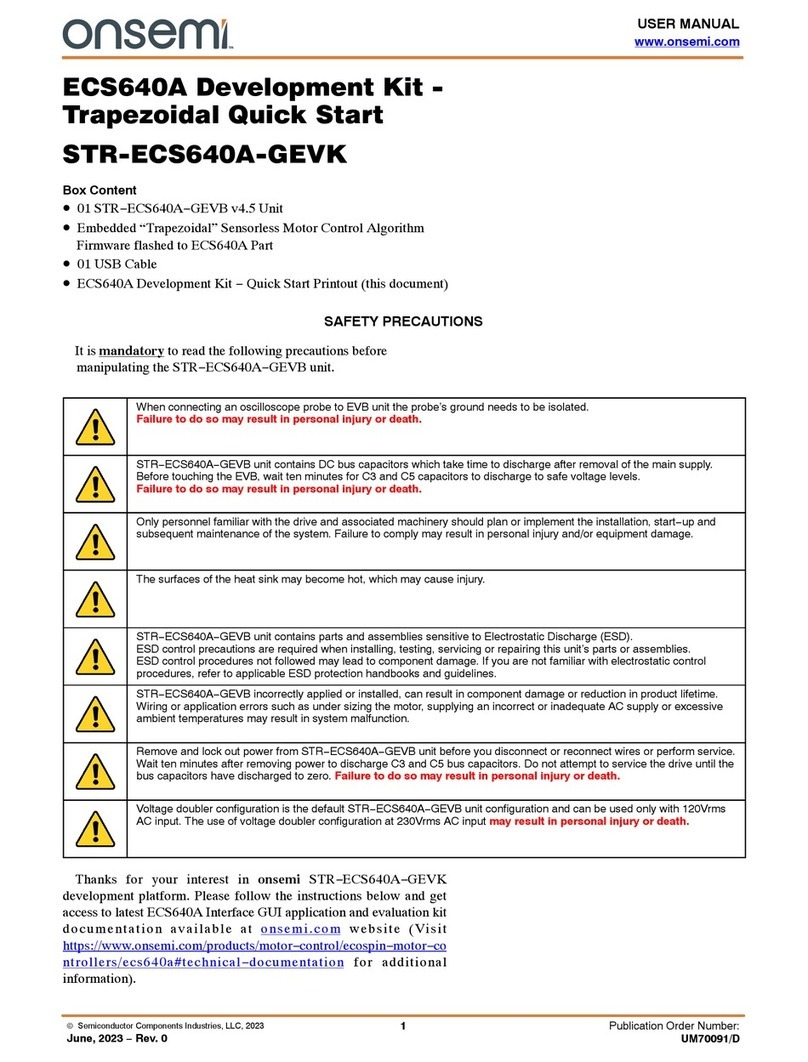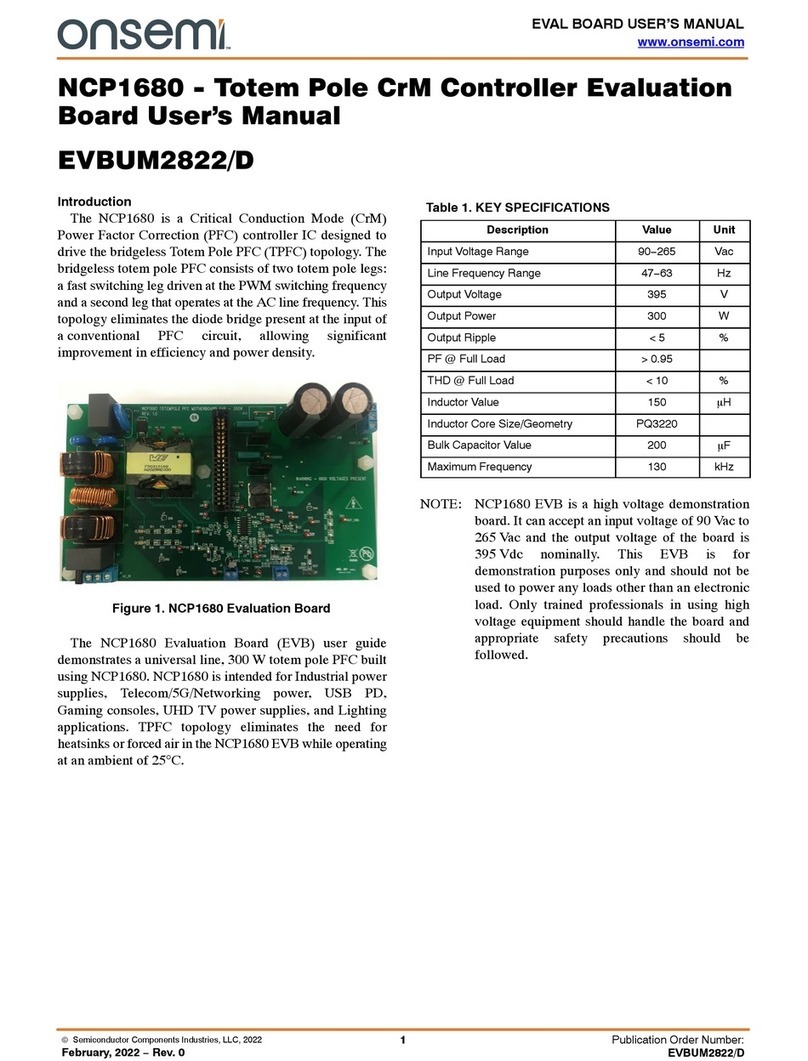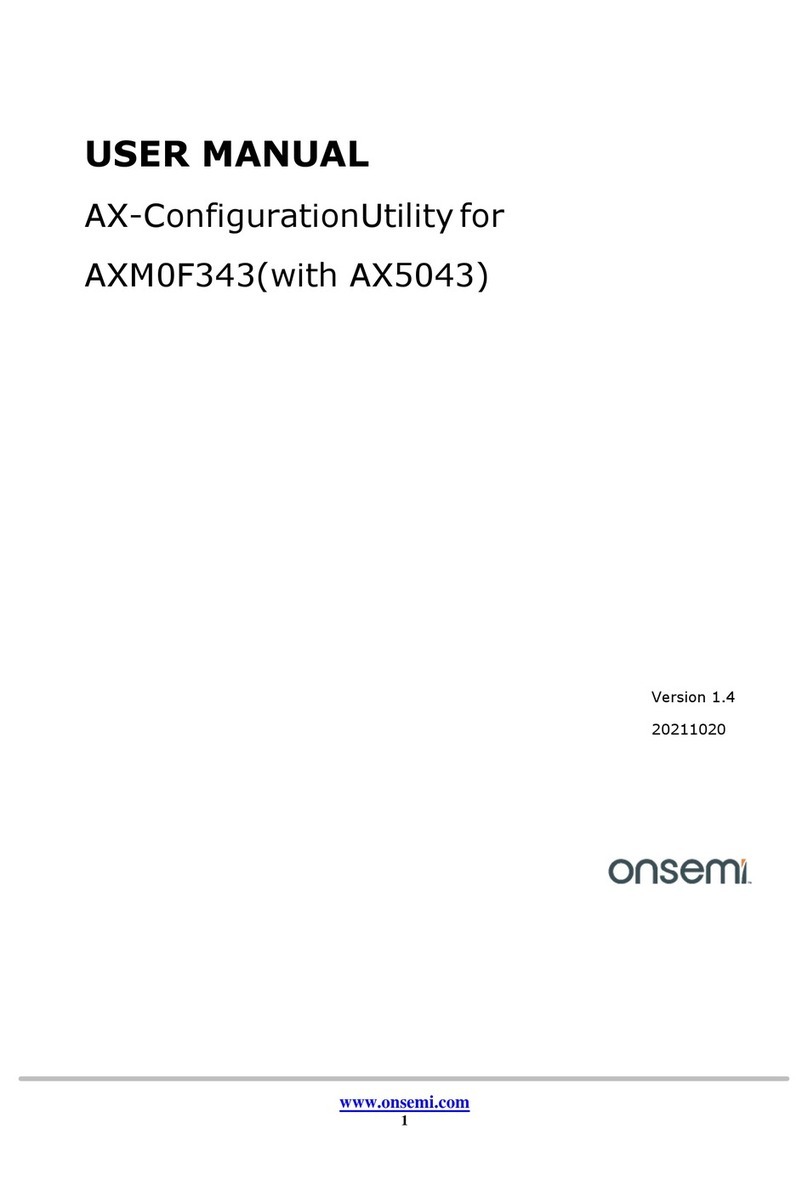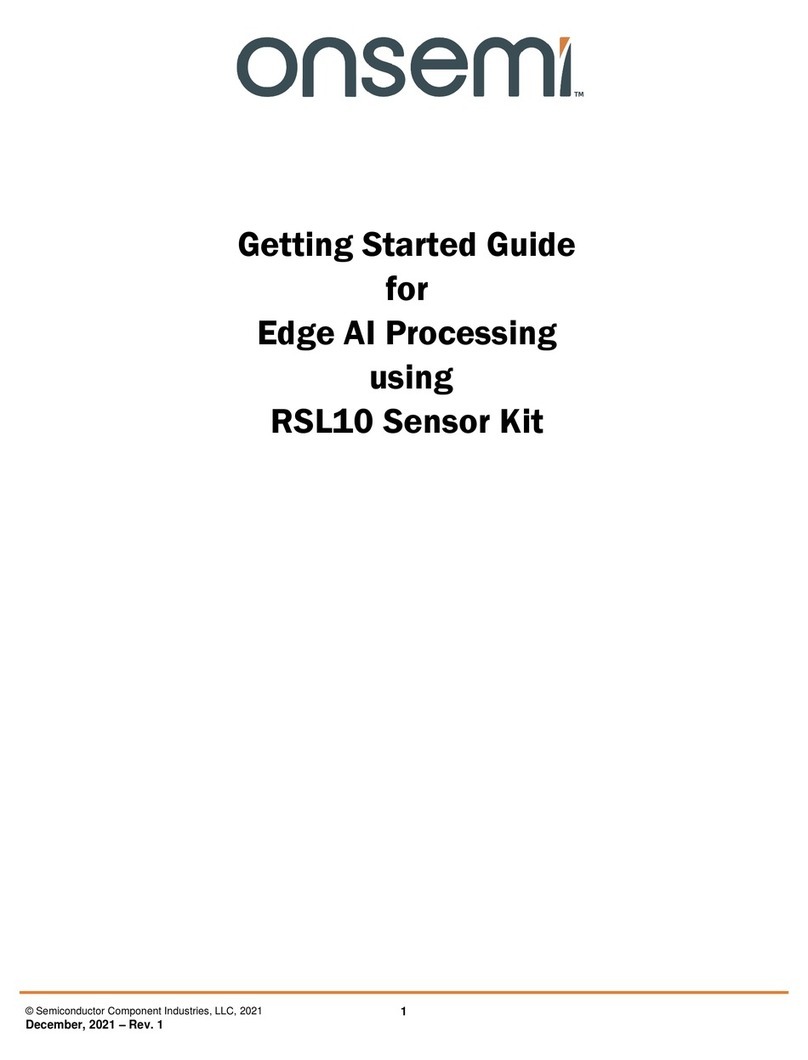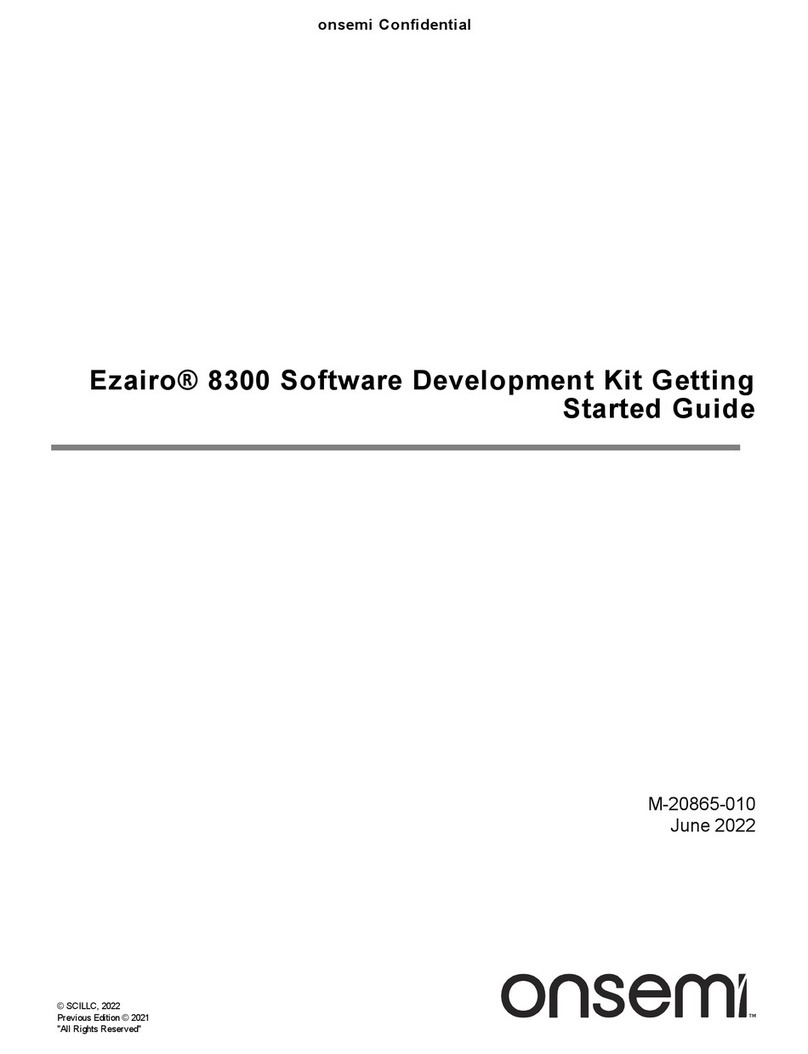
UM70095/D
www.onsemi.com
8
Differently from before, the code has removed pointer
dereferencing to access HAL functions. Instead, driver
function permissions are given to files that require it in order
to function, saving a large amount of space, and saving
several kB of function pointer storage and pointer
dereferencing within the code. In addition, several high level
interfaces built upon the high level HAL abstraction have
been removed to save space.
Old flow example:
PE changes VBUS value for a contract being negotiated:
the following logic path would be followed: PE →
port_vbus_src() →FUSBDEV HAL with Drivers
Abstracted (port→dev→driv→XXX)
port→dev→driv→set_pd_source()→TCPD HAL Driver
with Devices Abstracted (fusb15xxx_XXX)
fusb15xxx_set_pd_source()→HAL Driver with
Registers Abstracted (XXX_DRIVER)
TCPORT_DRIVER.pd.Source() →Register level logic
New flow example:
PE changes VBUS value for a contract being negotiated:
the following logic path would be followed:
PE() →port_vbus_src() →FUSBDEV HAL Abstraction
with Drivers Abstracted (fusbdev_tcpd_XXX)
fusbdev_tcpd_set_pd_source()→TCPD Driver with
Devices Abstracted (fusb15xxx_XXX)
fusb15xxx_set_pd_source()→HAL Driver with Registers
Abstracted (XXX_DRIVER)
TCPORT_DRIVER.pd.Source() →Register level logic
onsemi, , and other names, marks, and brands are registered and/or common law trademarks of Semiconductor Components Industries, LLC dba “onsemi” or its affiliates
and/or subsidiaries in the United States and/or other countries. onsemi owns the rights to a number of patents, trademarks, copyrights, trade secrets, and other intellectual property.
A listing of onsemi’s product/patent coverage may be accessed at www.onsemi.com/site/pdf/Patent−Marking.pdf. onsemi reserves the right to make changes at any time to any
products or information herein, without notice. The information herein is provided “as−is” and onsemi makes no warranty, representation or guarantee regarding the accuracy of the
information, product features, availability, functionality, or suitability of its products for any particular purpose, nor does onsemi assume any liability arising out of the application or use
of any product or circuit, and specifically disclaims any and all liability, including without limitation special, consequential or incidental damages. Buyer is responsible for its products
and applications using onsemi products, including compliance with all laws, regulations and safety requirements or standards, regardless of any support or applications information
provided by onsemi. “Typical” parameters which may be provided in onsemi data sheets and/or specifications can and do vary in different applications and actual performance may
vary over time. All operating parameters, including “Typicals” must be validated for each customer application by customer’s technical experts. onsemi does not convey any license
under any of its intellectual property rights nor the rights of others. onsemi products are not designed, intended, or authorized for use as a critical component in life support systems
or any FDA Class 3 medical devices or medical devices with a same or similar classification in a foreign jurisdiction or any devices intended for implantation in the human body. Should
Buyer purchase or use onsemi products for any such unintended or unauthorized application, Buyer shall indemnify and hold onsemi and its officers, employees, subsidiaries, affiliates,
and distributors harmless against all claims, costs, damages, and expenses, and reasonable attorney fees arising out of, directly or indirectly, any claim of personal injury or death
associated with such unintended or unauthorized use, even if such claim alleges that onsemi was negligent regarding the design or manufacture of the part. onsemi is an Equal
Opportunity/Affirmative Action Employer. This literature is subject to all applicable copyright laws and is not for resale in any manner.
ADDITIONAL INFORMATION
Arm, Cortex, and the Arm logo are registered trademarks of Arm Limited (or its subsidiaries) in the EU and/or elsewhere.
All other brand names and product names appearing in this document are registered trademarks or trademarks of their respective holders.
TECHNICAL PUBLICATIONS:
Technical Library: www.onsemi.com/design/resources/technical−documentation
onsemi Website: www.onsemi.com
ONLINE SUPPORT: www.onsemi.com/support
For additional information, please contact your local Sales Representative at
www.onsemi.com/support/sales
◊





